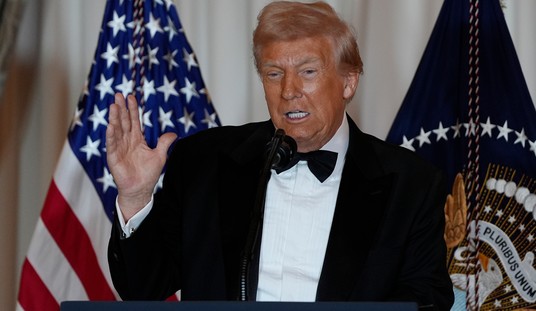Advertisement
The battle for Iraq today is not so dissimilar to the Italy campaign waged by the Allies in WWII. Into the late winter of 1943 — two years into the war — the Allies did not have a strategy for victory. Likewise, America did not have a strategy for victory in Iraq until January 2007 when President Bush announced the Surge.
In 1943, Churchill had determined that breaking the back of the German Army in Italy would lead to the eventual downfall of the Axis powers in Europe. His theory went that a March to Rome would siphon off enough German troops to allow the Allies to effectively overwhelm the enemy at Normandy. At the time, Prime Minister Churchill’s theory was controversial, and while President Roosevelt signed off it on, military leaders in the Mediterranean were initially skeptical. General Mark Clark, commander of American forces in Italy, at first resisted Churchill’s notion that a full-out assault on the most powerful army in the world would lead to anything but disaster. Clark thought the plan was nothing less than death by stupidity.
Similarly, many in Washington were not convinced that a plan as bold as the Surge would work. Of course, the major difference between WWII and now is that today’s strategy came from the military, while the skepticism about that strategy came from the politicians. Some in Washington called the Surge an escalation of the war; others called it a quagmire and likened our efforts in Iraq to Vietnam. But General David Petraeus was convinced that if the number of troops available to him was increased and if he were able to effectively deploy them, his counter-insurgency strategy would pay off.
Recommended
Advertisement
So far, the raw data suggest that security gains created by the surge are working. Attacks on civilians are down 90 percent, IED attacks on our soldiers are down 75 percent and almost three thousand families in the Karhk district alone have migrated back to their homes after initially fleeing militia-led religious cleansing. Further, on Friday, while I was standing less than a half-mile away from Sadr City, Moqtada Al Sadr ordered his militia to disarm itself.
Still, there is cause for concern with recent events at the tactical level that may have international repercussions. Explosively formed penetrators, EFP’s, have been killing and wounding our troops. Intelligence reports inform us that EFP’s can be traced back to Iran along with other munitions that have been used against our troops. Furthermore, Moqtada Al Sadr’s relationship with Iran and the Quds force is troubling and reports show that special groups targeting American soldiers and Iraqi Army forces have been trained by Iranians. Additional concerns have been raised about the quality of Iraqi Security Forces and the level of training they have received.
While here in Baghdad, I intend to pose tough questions to our top commanders on the ground, the lieutenants and sergeants fighting this war and their Iraqi counterparts. The fundamental question for me is whether or not we have a workable plan to sustain a strategy for victory in Iraq today. The people of Iraq have a window of opportunity, and we need to help them take advantage of it. I intend to find out if that is happening.
Advertisement
On the road from Baghdad to the airport is the beautifully optimistic statue of Abbas ibn Farnas, the Iraqi Icarus. He stands with one leg taking a step, arms outstretched and wings spread full in mid-flight; the expression on his face is one of pragmatic hopefulness. Farnas knew full well that his experimental flight may end in death, which it eventually did, but was worth taking the risk.
Flying Man, as he’s affectionately called by many in Iraq, has seen both his fair share of optimism and destruction as he looks toward Baghdad along the five mile stretch of road called Route Irish by the U.S. Army. Traveling on Route Irish — once the most dangerous trip in the world — the sight of Flying Man gave one relative comfort, signaling the route would soon end within the barricaded confines of the airport, where travelers would be shielded from IEDs and homicidal car bombers.
I’m not exactly sure what I’m going to find during my time in Baghdad, but it’s my hope that Flying Man is looking over a more optimistic and peaceful Iraq today. Just as Farnas knew that freedom has its risks as well as rewards, I hope the people of Iraq understand the same.























Join the conversation as a VIP Member